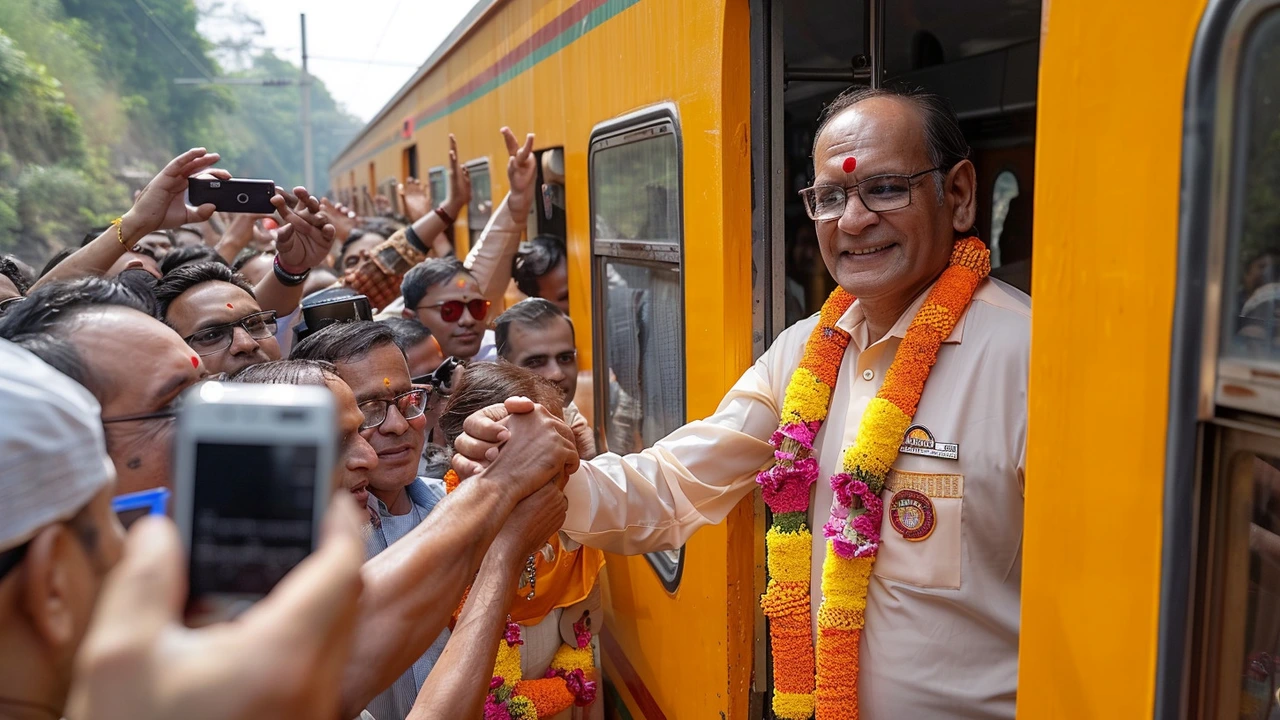Election Results 2024: BJP Faces Unexpected Challenges in Key Stronghold Seats

Election Results Reveal Unexpected Challenges for BJP in 2024
The 2024 Lok Sabha elections have brought a blend of exhilaration and anxiety for the Bharatiya Janata Party (BJP). Traditionally known for its firm grip over numerous constituencies, this election season has delivered a surprise—BJP is trailing in 15 of its stronghold seats, despite leading in 79 out of the 94 seats it has held in the last three elections. This unexpected development has left political analysts and BJP supporters alike in a state of shock and contemplation.
As of 11:45 am, data shows that while the party has been able to maintain a lead in a significant number of its established territories, the trail in these 15 seats signals a potential shift in voter sentiment. Among the areas where the BJP trails are Maharashtra’s Jalna and Rajasthan’s Churu, notable for their strong historical ties to the party. Each of these constituencies has its unique local dynamics, but the overarching trend suggests a larger narrative at play.
The Implication of Trailing in Stronghold Seats
The BJP's stronghold seats are spread across 14 states and union territories, with the majority in Madhya Pradesh (16), Karnataka (15), and Gujarat (15). These areas have been vital to the party’s success in previous elections, acting as bastions of support that have propelled it to victory. Therefore, the trailing of the BJP in these constituencies marks a critical moment. It raises questions about the effectiveness of the BJP's campaign strategies and candidate selections, as well as the underlying reasons for the shift in voter behavior.
Among the 15 seats where the BJP is currently behind, several have traditionally seen fierce competition. For instance, in Maharashtra’s Jalna, the party's dominance is being tested by local dynamics and opposition candidates who have gained ground. In Rajasthan’s Churu, similar local factors are at play, challenging the BJP’s previously unassailable position.
Historical Context and Its Influence
To better understand the significance of this shift, it’s helpful to look at the historical context. In previous elections, the BJP had built a reputation for securing consistent wins in key states: Madhya Pradesh, Karnataka, and Gujarat. Out of these, seven seats have been particularly symbolic, with repeated wins over the decades. Constituencies like Gandhinagar, Surat, Bhind, Bhopal, Damoh, Indore, and Vidisha have seen the BJP winning nine times consecutively, showcasing the party’s broad appeal and organizational strength. The 2024 elections, however, seem to tell a different story. The trails indicate a potential erosion of trust and a call for change by the electorate.
Significantly, Gandhinagar and Surat, both in Gujarat, have been stalwart examples of BJP’s influence. Gandhinagar, the constituency which has been represented by some of the party’s top leaders, and Surat, known for its industrial base and supportive voter base, are essential for the BJP. Any sign of lagging in these regions sends ripples through the party’s strategy rooms.
Exploring the Cause of Change
A deep dive into the possible reasons behind this trailing reveals multiple factors. The local governance issues, economic policies, candidate selection, and even regional rivalries contribute to this scenario. It may also indicate voter fatigue with long-term incumbency, highlighting the demand for new faces and fresh promises. Economic slowdown, agrarian distress, and social policies have also influenced voter behavior, causing a dip in support.
The Role of Opposition and Regional Parties
The influence of opposition parties and regional dynamics cannot be underestimated. In many of these stronghold constituencies, opposition parties have strategically placed strong candidates and pushed robust campaigns. Regional parties, with their localized focus, have also been able to make significant inroads, capitalizing on any dissatisfaction with the BJP. This united opposition front creates a formidable challenge, showing that BJP’s hold over its strongholds is not as impregnable as previously thought.
Moreover, social media and grassroots movements have amplified local issues, encouraging voters to make more informed and sometimes oppositional choices. The participation of younger voters and their aspirations also steer the electoral trends, leading to a more fragmented and competitive political landscape.
The Road Ahead for BJP
Looking forward, the BJP must reflect on this data and fine-tune its strategies. Addressing the grievances of the voters, boosting local governance, and adjusting political promises to better align with the on-ground realities will be crucial. The party's ability to adapt and re-engage with the electorate, particularly in these trailing constituencies, may well determine the final outcome of this election cycle.
As votes continue to be counted, these trends may see further shifts. However, the current scenario stands as a significant takeaway for the BJP, highlighting the importance of not taking any voter segment for granted. With more detailed results expected soon, political enthusiasts and analysts remain on edge to see how this narrative unfolds.